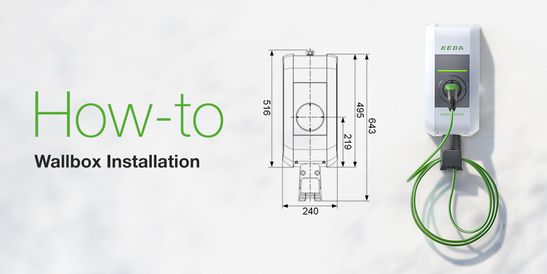Bidirectional Charging – Opportunity and Obstacle
- Knowledge
- Charging
- Technical
- 23.9.2022
- Reading Time: {{readingTime}} min
- Share Article

Contents

What is bidirectional charging?
‘Bidirectional’ means ‘in two directions’. In the context of charging, this might seem antithetical. After all, you either charge or discharge. That goes for every battery, otherwise you wouldn’t need it. So, we should be a bit more specific: Bidirectional charging means the possibility to draw energy from the vehicle battery. For uses other than your vehicle. In BiDi charging – as it is abbreviated – the car battery is thus discharged not to power the electric drive or the heating of the electric car but to supply external consumers with energy. As simple as it sounds in theory, it is fairly complex in practice. How the energy is used is determined by the type of bidirectional charging. And the type also changes the challenges that accompany the concept.
Vehicle-to-X: different types of bidirectional charging
On one hand, you have the car battery, on the other, the consumer. That’s why we use the term 'Vehicle-to-X’ (V2X) to bundle the different types of bidirectional charging. Here are the three most important types:
1. Simple bidirectional charging: Vehicle-to-Load (V2L)
The simplest type supplies a consumer via an integrated socket. Today, many electric vehicles already have such a power outlet. Either via a domestic socket (or several) in the car or via an adapter that is plugged into the charging port. You could plug in a vacuum or, depending on the capacity, a saw. This is also called Vehicle-to-Utility (V2U), as you could use power tools in the broadest sense of the term. Another name for it is Vehicle-to-Device (V2D).
2. Building supply: Vehicle-to-Home (V2H)
The amount of energy storable in most electric car batteries can supply a building with electricity – at least for some time. Power from your own PV system (and theoretically even solar energy from the grid) can be stored in your car by day. This way you can use it in the evening or at night. The electric car thus works as a fixed energy storage. On wheels, that is. The storage increases the self-consumption rate of self-produced electricity. Which makes you less dependent on externally produced energy. Unlike in Vehicle-to-Load usage, here the building’s own energy management system must constantly communicate with the vehicle. If excess PV energy is produced, it flows into the vehicle battery. If the demand in the building is higher than the power supplied by the PV modules, the battery switches to feed-in mode. And if the battery status drops under a predefined point, power from the grid must be used. Connected in between is the wallbox, which up to now only had to let energy flow in one direction – into the battery. However, there is no authorized way within the legal framework to conduct this type of bidirectional charging yet.
3. Stabilising the power grid: Vehicle-to-Grid (V2G)
Things get even more complicated when you want to use the battery in a way that is open for electrical grid applications instead of only isolated applications. Which is to say, the vehicle battery should not only be used for personal but also for collective storage. Electricity produced by large photovoltaic farms by day, for instance, can be put to use in temporary storage in the plugged-in electric car on less sunny times of day without having to invest in large storage facilities. Even simpler, excess electricity is stored to be retrieved at peak times. Another positive effect of this might be that, overall, less base capacity has to be provided large power plants to meet the entire electricity demand. A big challenge of this is regulation. The grid provider would have to be connected to every wallbox. This is the only way they can control if electricity is being retrieved of buffered. Of course, this would only take place with a limited range – probably a handful of kWh. Yet permanent communication must be secured. Besides, the electricity from the car battery must be synchronized with that of the power grid when being fed.
Battery use for third-party consumers: Goodbye warranty?
Along with technical challenges, bidirectional charging also entails legal issues. The electric vehicle manufacturer’s warranty of the most expensive component, the battery, is often attached to a certain lifespan or mileage. What if battery strain from driving and recharging is joined by additional charging cycles to feed external consumers? Does the warranty expire? Shorten? Is bidirectional charging acceptable to a certain extent? If so, who determines the extent?
Bidirectional charging: a technology of the future
Before bidirectional charging can become a technological boon, several questions must still be answered, and obstacles mastered. In any case, the concept is promising. Its realisation, however, requires collective commitment – from the electricity providers, the car manufacturers, and especially the legislature.

























